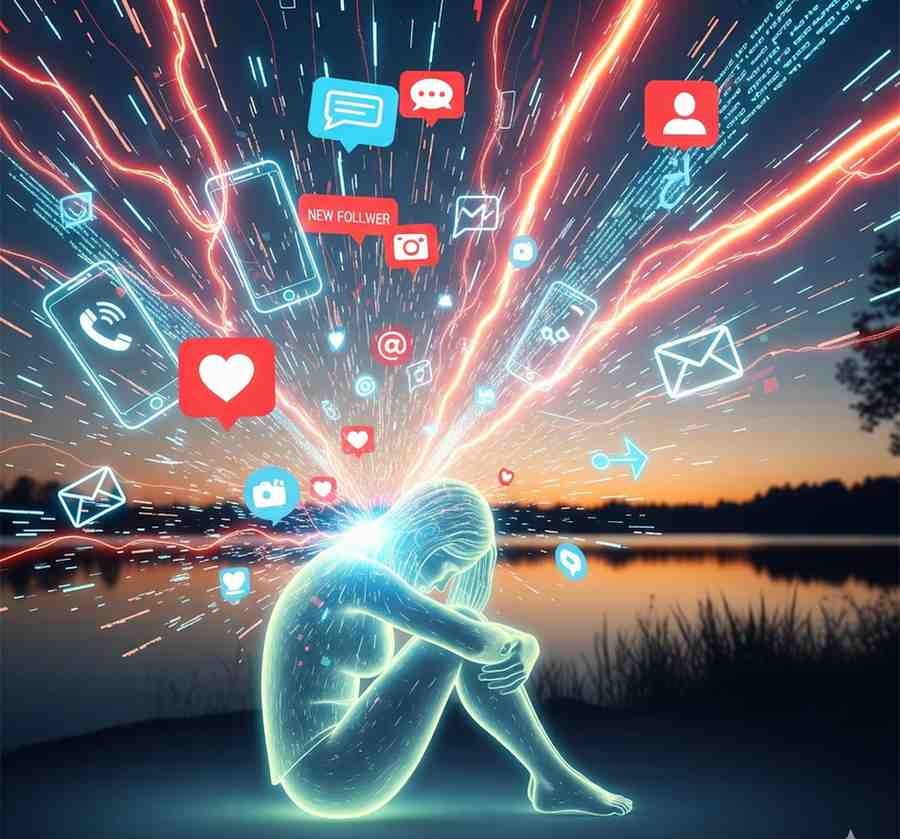Great Health Great Fitness
Rising Cases of “Digital Burnout” Among Young Adults Spark Global Concern

October 3, 2025 — Global Health News
Mental health experts are sounding the alarm on a rapidly emerging condition being labeled “Digital Burnout”, a modern mental health crisis linked to excessive use of smartphones, social media, and constant online engagement.
The condition, first flagged in global health surveys earlier this year, is now being recognized as a serious risk to mental well-being, particularly among young adults aged 18–35.
📊 What Is Digital Burnout?
Digital Burnout refers to a state of chronic stress, anxiety, and mental fatigue caused by prolonged exposure to digital screens, constant notifications, and the pressure of maintaining an online presence.
Key symptoms reported include:
- Persistent fatigue despite adequate rest
- Difficulty concentrating or remembering tasks
- Increased irritability and emotional instability
- A sense of emptiness or disconnection despite being “constantly connected”
- Sleep disturbances caused by late-night screen use
Mental health professionals note that unlike traditional burnout, which is often tied to workplace stress, Digital Burnout extends across social, professional, and personal digital interactions, making it harder to escape.
🧠 The Science Behind It
Neurological research has revealed that constant digital engagement overstimulates the brain’s dopamine system, creating cycles of instant gratification that mimic addictive behaviors. Over time, this can weaken focus, reduce resilience to stress, and contribute to anxiety and depression.
One researcher described it as “the 21st-century equivalent of overwork — except now the stress follows people everywhere, in their pockets.”
🌍 Global Trends
Recent surveys show:
- 62% of young adults report feeling “mentally exhausted” by constant digital exposure.
- 1 in 3 adolescents admit to experiencing depressive symptoms linked to heavy social media use.
- Countries with higher average daily screen time are reporting a surge in anxiety and sleep-related disorders.
Public health experts warn that if left unchecked, Digital Burnout could become a major public health challenge — comparable to physical inactivity or poor diet.
🩺 Solutions and Interventions
Governments, schools, and workplaces are beginning to respond:
- Digital Detox Programs: Several universities and corporations are introducing weekly “offline days” to encourage healthier screen habits.
- Mindfulness & Therapy: Mental health professionals are recommending mindfulness, outdoor activities, and cognitive behavioral therapy (CBT) to counteract symptoms.
- Screen Time Regulations: Some nations are considering stricter limits on digital ads targeting youth and are promoting campaigns for balanced digital use.
✅ Expert Advice
Mental health specialists suggest the following steps to reduce risk:
- Take regular breaks from screens (20 minutes away every 2 hours).
- Limit phone use before bedtime to improve sleep quality.
- Engage in at least 30 minutes of physical exercise daily.
- Prioritize real-world social connections over online interactions.
- Seek professional help if feelings of exhaustion, sadness, or anxiety persist.
📣 Conclusion
Digital Burnout is emerging as one of the defining mental health issues of the digital age. While technology has connected the world like never before, it has also created new challenges for the human brain and emotional well-being.
Experts agree: the key is not to abandon technology, but to learn healthier ways to coexist with it. By recognizing the signs early and adopting balanced digital habits, individuals can protect their mental health while still benefiting from the online world.
